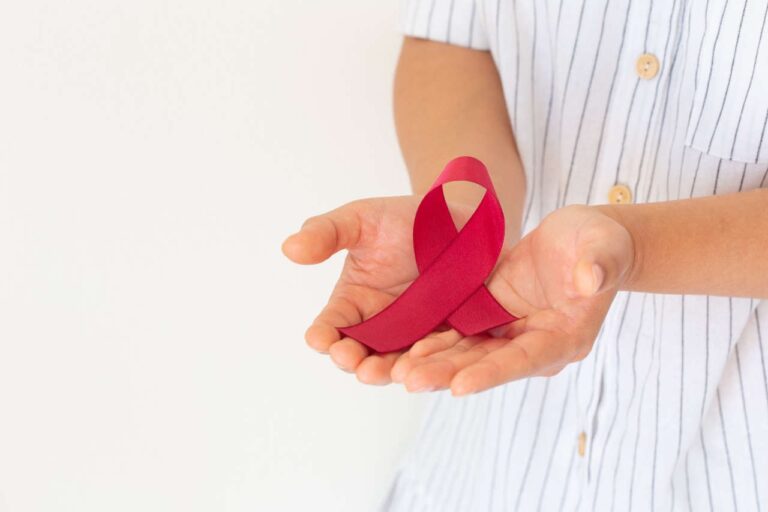
Oxaliplatin (pronounced) is also known by the brand name Eloxatin. It is an antineoplastic (anti-cancer) drug that belongs to a class called alkylating agent as a platinum analog. It is a type of chemotherapy that prevents cancer cells from multiplying and restricts their growth.
Speak to a Chemo Specialist
What Is Chemotherapy?
Chemotherapy is a cancer treatment in which certain drugs are used to kill cancerous cells. These drugs are usually cytotoxic chemical substances that are toxic to the cells, restrict their growth, prevent their division, and ultimately kill the cells.
Protection From Chemotherapy
This drug is considered to be a hazardous agent. Therefore, it is important to take appropriate precautions for receiving, handling, storing, administering, and disposing of this medication. It is highly recommended to wear gloves while administering this medication.
How Is Oxaliplatin Used?
Oxaliplatin has been approved by the Food and Drug Administration (FDA) to treat many different types of cancers including gastric, esophageal, biliary tract, testicular, pancreatic, and ovarian cancer, among many others. It can be prescribed alone or with other medications simultaneously.
Available Formulations
Oxaliplatin is only available as a solution for intravenous infusion in the following dosages: 50 mg, 100 mg, or 200 mg. The concentration for all doses is 5 mg/ml.
Directions for Use
Oxaliplatin is typically administered as an IV infusion over 2 hours, which can be extended up to 6 hours for certain conditions. The infusion line should be flushed with dextrose 5% in water (D5W) prior to administration of any concomitant medication. Avoid the use of ice chips, exposure to cold temperatures, or consumption of cold food/beverages during or within hours after oxaliplatin infusion, as they may worsen neurological symptoms. Avoid using needles or administration sets containing aluminum. Also, do not use with any chloride-containing products.
Oxaliplatin dose varies depending on treatment type and severity. Verify the correct dose and frequency with your provider. The dose should not be more or less than what is prescribed. When used in combination with other medications, consult with your physician about which medication should be administered first.
Missed Dose
This medicine needs to be administered on a fixed schedule. If you miss a dose, notify your physician, home health caregiver, or treatment clinic.
Storage
Storage time varies by product; refer to individual product labeling for details. Protect concentrated solution from light (store in original carton) and do not freeze. Solutions diluted in D5W for infusion are stable up to 6 hours at room temperature or up to 24 hours under refrigeration. Solutions diluted for infusion do not require protection from light. Special handling and preparation of this product are warranted.
Speak to a Specialist About Copay Assistance
What To Avoid While Taking Oxaliplatin
While taking oxaliplatin therapy, you must follow some precautions. Always tell your physician about any medications you are already taking. Do not take any drug or medicine (even herbals, vitamins, or over-the-counter medications) without prior consent from your physician or pharmacist. They may have some significant interactions with oxaliplatin.
It is recommended to AVOID cold beverages and exposure to cold temperatures when you are on oxaliplatin therapy as it causes sensitivity to the cold and gives rise to conditions such as tingling, numbness, and muscle spasms (peripheral neuropathy). Neurotoxicity can also be triggered or aggravated while taking oxaliplatin if exposed to cold temperatures or cold beverages. Therefore, it is highly recommended to consume drinks that are warm or at room temperature.
Pregnancy and Oxaliplatin
Pregnancy status must be checked prior to starting oxaliplatin therapy in women of childbearing age, and effective contraception must be used during treatment and for 9 months after the last dose. Males with female partners of reproductive potential should also use effective contraceptive measures during therapy and for 6 months after the last oxaliplatin dose. Oxaliplatin may cause fetal harm and is therefore not recommended for women who are breastfeeding during therapy. Breastfeeding should be avoided for at least 3 months after the last dose.
Side Effects
As with any other medication, you may encounter side effects while taking oxaliplatin. A few things to remember are:
- You may not have all the side effects listed below. Many people may experience little to no side effects.
- The severity of side effects may vary from person to person, so don’t compare your side effects with other people’s experiences.
- Most of the side effects will improve when therapy is discontinued.
- These side effects are easily manageable most of the time either by readjusting the dose of oxaliplatin or using additional medications to treat the symptoms. Consult with your physician or pharmacist to explore available options.
- Do not hide any symptoms; if you feel any discomfort, do not hesitate to tell your physician or pharmacist about it.
Note: This is not a comprehensive list of all side effects. Talk to your doctor if you have questions.
Some of the more serious side effects of oxaliplatin are listed below:
Bone Marrow Suppression (BMS)
It is essential to keep up with regular blood tests, especially the complete blood count test (CBC). The CBC blood test is capable of detecting potential BMS, including neutropenia (low neutrophils, a type of white blood cell), thrombocytopenia (low platelet count), and anemia (low red blood cells), all of which are potential side effects of using oxaliplatin.
Get Chemotherapy Copay Assistance
Chemotherapy Financial AssistanceExtravasation
Oxaliplatin is an irritant with vesicant-like properties; ensure proper needle or catheter placement prior to and during infusion; avoid extravasation. Extravasation is the leakage of the drug from a blood vessel or tube into the tissue around it. If extravasation occurs, stop infusion immediately, disconnect (leave the needle in place), and monitor the IV site for redness, swelling, or pain. Elevate the part of the body that has experienced the extravasation and apply either a warm or cold compress to the area.
Allergic Reaction/Hypersensitivity
There have been cases reported of patients with allergic reactions to the oxaliplatin injection or any of its components. In addition, worsening asthma has been reported with therapy in patients with a history of asthma, sinusitis, or allergies. Signs of an allergic reaction can include rash; hives; itching; red, swollen, blistered or peeling skin with or without fever; wheezing; tightness in the chest or throat; trouble breathing, swallowing, or talking; unusual hoarseness; or swelling of the mouth, face, lips, tongue, or throat. If you are experiencing any of these symptoms, seek emergency medical attention immediately.
Bleeding/Hemorrhage
Bleeding can vary from mild to serious. More serious hemorrhage can include GI bleeding, vomiting blood, bleeding from the brain, nose bleeds, or vaginal bleeding.
Posterior Reversible Encephalopathy Syndrome (PRES)
PRES is a neurological disorder and may present as headache, seizure, lethargy, confusion, blindness, blurred vision, and other visual/neurologic symptoms with possible hypertension. Diagnosis of PRES can be confirmed by MRI, and if confirmed, it is recommended to discontinue oxaliplatin immediately.
Muscle Pain/Rhabdomyolysis
Rhabdomyolysis occurs when damaged muscle tissue releases its proteins and electrolytes into the blood, which may damage the heart and kidneys and can be fatal or cause permanent disability. Most common symptoms of rhabdomyolysis include muscle pain in the shoulders, thighs, or lower back; muscle weakness/trouble moving arms or legs; dark red or brown urine; or decreased urination. Consult your physician immediately if you are experiencing any of these symptoms.
Lung Complications
On rare occasions, oxaliplatin may cause a condition called pulmonary fibrosis. It typically presents as shortness of breath, cough, or difficulty breathing. Consult your physician immediately if you are experiencing any of these symptoms.
Nausea/Vomiting
Oxaliplatin is associated with moderate nausea/vomiting potential and is known to cause delayed nausea and vomiting. Antiemetic treatments are recommended to prevent nausea and vomiting.
Cardiac Complications
There is a risk that oxaliplatin may cause cardiac complications. More specifically, it can cause a condition called QTc prolongation. This is when the heart’s electrical system takes longer than normal to recharge between beats, and this can be detected through a periodic electrocardiogram (ECG). QTc prolongation can potentially lead to cardiac arrhythmias. Monitoring for cardiac health is warranted throughout therapy.
Consult a Chemotherapy Specialist
Get Chemotherapy Treatment AssistanceNeuropathy
Neuropathy is a “pins and needles” or numbness/weakness sensation in certain areas of the body. Use of ice chips, exposure to cold temperatures, or consumption of cold food/beverages during or within hours after oxaliplatin infusion can worsen neuropathy symptoms. Cold-triggered neuropathy may last up to 1 week after oxaliplatin administration. Acute neuropathy commonly recurs with subsequent doses. Two types of peripheral sensory neuropathy may occur.
- The first type of neuropathy can present within hours to 2 days and is reversible (typically resolves within 14 days). It has primarily peripheral symptoms that are often worsened by cold. Symptoms may include transient abnormal, reduced, or painful sensations in the hands, feet, tongue, or throat; jaw spasm; eye pain; and a possible feeling of chest pressure.
- The second type of neuropathy typically presents for 2 weeks or longer. It is usually characterized by sensations that actually interfere with daily activities (e.g., writing, buttoning, swallowing, difficulty walking). These symptoms may be reversible after discontinuation of treatment.
Other common side effects may include:
- Hair loss
- Mouth sores
- Constipation/diarrhea
- Feeling tired/weak
- Back/joint pain
- Stomach pain/upset stomach
- Trouble sleeping
- Change in taste
Monitoring
Due to its many side effects, monitoring is an important part of managing oxaliplatin therapy. The following includes what you can expect with oxaliplatin use:
- Monitoring for hypersensitivity and pulmonary fibrosis
- Frequent blood tests to monitor bone marrow suppression
- ECG monitoring for signs of QTc prolongation
- Frequent monitoring of liver function tests (LFTs) to ensure liver function
- Hepatitis B virus screening before initiating therapy
- Frequent monitoring of bleeding risk through blood tests that detect clotting time
Speak to a Chemo Specialist
Oxaliplatin FAQs
Is oxaliplatin a chemo agent?
Chemo drugs are those that are used in the management of various cancers. Oxaliplatin works by blocking certain structures in the cancer cell which are essential for the replication and growth of cancer and normal cells. Inhibition of these structures leads to cellular death. Thus, it is a chemo agent that is used as a treatment option for various cancer patients.
What can I do to minimize mouth sores?
To prevent mouth sores:
- Take proper care of your mouth by brushing and flossing regularly
- Rinse your mouth frequently with a homemade mouthwash
- Do not use store-bought mouthwashes, especially those that contain alcohol, as they may irritate your mouth
What can I do to minimize neuropathy?
To help prevent neuropathy:
- Avoid using ice cubes or drinking cold drinks
- Avoid using ice packs on your body
- Avoid drinking any cold fluids or eating ice cream
- Wear gloves while handling cold foods, cold drinks, or refrigerated objects
- Cover your body, especially your skin, head, and face, when going outside in cold temperatures
Can you lose your hair with oxaliplatin?
Like other chemotherapeutic agents, oxaliplatin has the potential to cause hair loss.
REFERENCES:
- Oxaliplatin. In: Lexi-drugs online [database on the Internet]. Hudson (OH): Lexicomp, Inc.; 2016 [updated 8 Mar 2022; cited 8 Mar 2022]. Available from: http://online.lexi.com.
- Oxaliplatin. In: In Depth Answers [database on the Internet]. Greenwood Village (CO): IBM Corporation; 2017 [cited 2022 Feb 2]. Available from: www.micromedexsolutions.com.
- Oxaliplatin: MedlinePlus Drug Information. Medlineplus.gov. https://medlineplus.gov/druginfo/meds/a607035.html. Published 2022. Accessed March 5, 2022.
- Oxaliplatin (Intravenous Route). https://www.mayoclinic.org/drugs-supplements/oxaliplatin-intravenous-route/description/drg-20068166. Published February 1, 2022. Accessed March 2, 2022.
- Oxaliplatin: Uses, dosage, side effects, warnings. Drugs.com. (n.d.). Retrieved March 8, 2022, from https://www.drugs.com/Oxaliplatin.html













